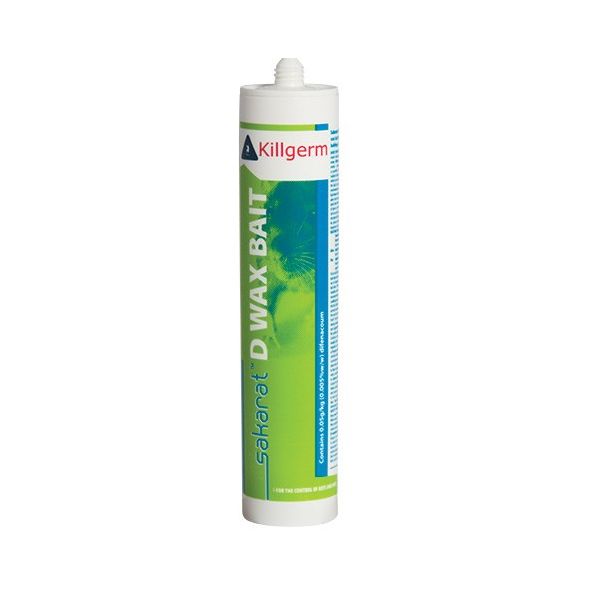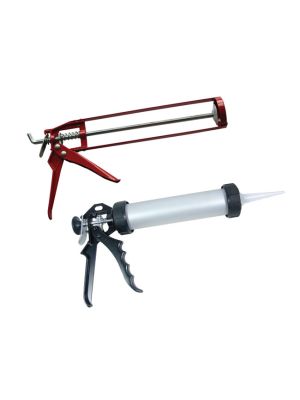Sakarat D Wax 300gm (Pk 10)

Please sign-in to view pricing and order products.
- Sakarat D Wax is a potent second-generation anticoagulant rodenticide suitable for the control of mice and rats.
- Sakarat Wax is supplied in 300g plastic tubes for easy application (caulking gun) and transportation, which reduces contamination risks.
- Due to the products blend of cereal and palatable ingredients, it’s ideal for use when competing against other food sources.
Active Ingredient: 0.005% difenacoum
Application: In and around buildings
Please note that on the summer formulation each tube is marked with a red batch number sticker. The winter formulation is marked with a white sticker.
UK Authorisation Number: UK-2012-0370
To be used only by professional users holding certification demonstrating compliance with UK rodenticide stewardship regime requirements.
Read the label before use. Using this product in a manner that is inconsistent with the label may be an offence. Refer to the CRRU UK Code of Best Practice (or equivalent) for guidance.
When this product is supplied to a user for the control of rodents, it shall only be supplied to a professional user holding certification demonstrating compliance with UK rodenticide stewardship regime requirements.
DIRECTIONS FOR USE:
Place Sakarat D Wax Baits manually in the rodent infested area. The bait product can potentially be used under many different circumstances and can be deployed using various means. A priority is always to exclude non target exposure as much as possible. Methods of deployment for professional users are bait stations (tamper resistant boxes), bait points (a makeshift arrangement which uses materials and/or the local environment to restrict access to the bait), loose but inaccessible (an arrangement which uses the local environment only to restrict access to the bait). Baits can be placed in bait boxes which may be fixed to the ground. When baiting rat burrows place bait onto suitable trays or natural items, stones, slates, wood etc, push into the burrow and heel-into cap the hole or plug with a tussock of grass or cover the hole with natural site materials. The vulnerability (of access by non target organisms) of a particular site is assessed in the decision for the deployment method to be used. The product must never be placed indiscriminately. Rodent death will occur 4-10 days after ingestion of a lethal dose which may take two or more feed.
BAITING FOR RATS AND MICE:
Situation: Domestic, commercial, agricultural.
Recommended frequency of revisiting: Frequently over first ten days, and regularly as consumption continues.
Mice Application rate for each bait point: Apply 2-5cm (2-5g) of bait per bait point. Bait points 2-5m apart. (5cm = 5g).
Rat Application rate for each bait point: Apply 4-8, 15cm lengths of bait of 1cm diameter. 50-100g of bait per bait point approx 5-10m apart
To be used by application through a skeleton or caulking gun. Take the wax bait tube and cut off the plastic dome end above the screw thread take care not to damage the thread itself. Attach the plastic nozzle onto the wax bait tube. Position the tube into a caulking gun, then use to place bait into suitable covered bait stations as described above. 5cm length of bait can be measured using the caulking tube, which is 5cm diameter. When using the caulking gun, deposit any run-off by drawing the end of the nozzle against the bait station. Release the caulking gun pressure after bait has been dispensed to prevent leakage, and cover the nozzle when not in use by use of the nozzle screw cap. This cap may also be used if necessary to cap the tube itself. Store in a cool place. Use a spatula to scrape bait out of bait stations during cleaning//disposal. Wear gloves for both application (loading) and post application (cleaning/disposal) of bait on caulking tube/gun and on the spatula.
Inspect baits regularly and replace eaten or contaminated bait. Continue as long as bait is being taken or until baits remain untouched, usually after 1-3 weeks. Inspect baits frequently over first ten days and regularly as consumption continues. Search for and remove dead rodents at frequent intervals during treatment, at least as often as when baits are checked and/or replenished. Daily inspection may be required in some circumstances. The resistance status of the target population should be taken into account when considering the choice of rodenticide to be used. In those areas where evidence of resistance to specific active substances exists, avoid their use. To manage the spread of resistance, it is advisable to alternate baits containing different anticoagulant active substances. Consult the Rodenticide Resistance Action Group resistance guidelines.
Unless under the supervision of a pest control operator or other competent person, do not use anticoagulant rodenticides as permanent baits. In most cases, anticoagulant bait should have achieved control within 35 days. Should activity continue beyond this time, the likely cause should be determined, documented and appropriate remedial action taken.



